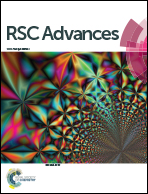Fracture behaviors of monolithic lithium disilicate ceramic crowns with different thicknesses
Abstract
The present in vitro study assessed the fracture resistance of monolithic ceramic crowns, made from two lithium disilicate glass ceramics with different thicknesses. Sixty monolithic ceramic crowns with different thicknesses (0.5 mm, 0.8 mm, 1.0 mm, 1.2 mm, and 1.5 mm respectively, n = 6 for each thickness group) were fabricated with IPS e.max Press (EMAX) and an experimental lithium disilicate ceramic (ELDC), respectively. All crowns were luted on the PMMA abutments with resin cement. Fracture load value (F(u)) was tested in a universal testing machine, and fractographic analysis was performed by stereomicroscope and scanning electron microscope (SEM). The results demonstrated that the F(u) values of the EMAX crowns at different thickness ranged from 685–1827 N, and those of the ELDC crowns ranged from 700–1791 N. An increase in the F(u) was observed as thickness increased. Besides, no statistical difference in F(u) values between ELDC and EMAX crowns at the same thickness was found. Thickness played a significant role in determining the fracture resistance of monolithic lithium disilicate ceramic crowns and a thickness range from 1.0–1.2 mm was recommended for monolithic crowns using EMAX and ELDC.



 Please wait while we load your content...
Please wait while we load your content...